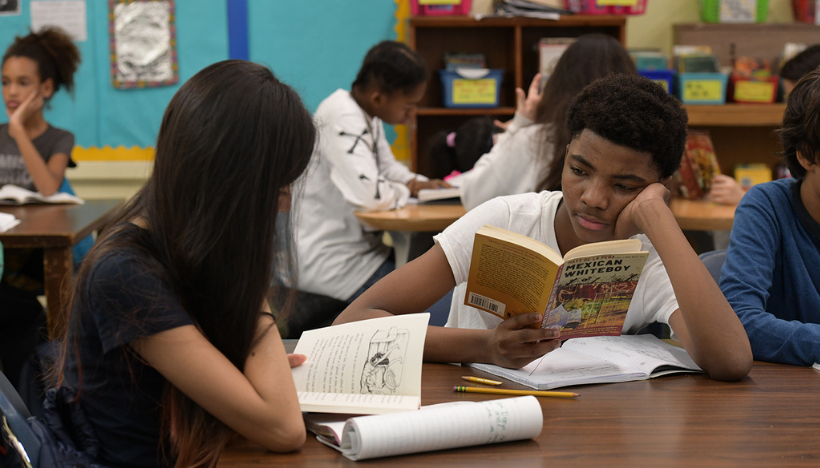Professional Knowledge for the Teaching of Writing, written by a committee of the NCTE Executive Committee, pinpoints 10 key issues in the effective teaching of writing. Over the next few weeks, we will unpack each one. This week, we will look at:
“Writing and reading are related.”
Research has shown that when students receive writing instruction, their reading fluency and comprehension improve. NCTE provides many resources that emphasize the reading and writing connection.
The NCTE Policy Brief on Reading and Writing across the Curriculum states that “discipline-based instruction in reading and writing enhances student achievement in all subjects … Without strategies for reading course material and opportunities to write thoughtfully about it, students have difficulty mastering concepts. These literacy practices are firmly linked with both thinking and learning.”
Katie Van Sluys, in her book Becoming Writers in the Elementary Classroom: Visions and Decisions, shares ways in which young people have the opportunity to become competent, constantly growing writers who use writing to think, communicate, and pose as well as solve problems.
Nancy Patterson, in a Voices from the Middle article raises the point, “If the whole idea behind English language arts classes is to foster a love of reading and a thirst for human experience and ideas represented through text, then we have to think critically about not only the kinds of reading our students do, but also the kinds of writing they do.” Read more in “Form and Artistry: The Reading/Writing Connection.”
“A Snapshot of Writing Instruction in Middle Schools and High Schools” by Applebee and Langer provides a detailed look at schools and data, interviews with teachers and administrators, and a national survey of teachers on the changes in the teaching of writing.
Bob Fecho, author of Writing in the Dialogical Classroom: Students and Teachers Responding to the Texts of Their Lives, argues that teachers need to develop writing experiences that are reflective across time in order to foster even deeper explorations of subject matter. He creates an ongoing conversation between classroom practice, theory, and research to show how each informs the others.
Designing Writing Assignments by Traci Gardner offers practical ways for teachers to develop assignments that will allow students to express their creativity and grow as writers and thinkers while still addressing the many demands of resource-stretched classrooms.
In Everyday Genres: Writing Assignments across the Disciplines, the author, Mary Soliday, calls on genre theory to analyze the common assignments given to writing students in the college classroom, and to investigate how new writers and expert readers respond to a variety of types of coursework in different fields.
How do you use the NCTE Professional Knowledge for the Teaching of Writing in your classroom?

